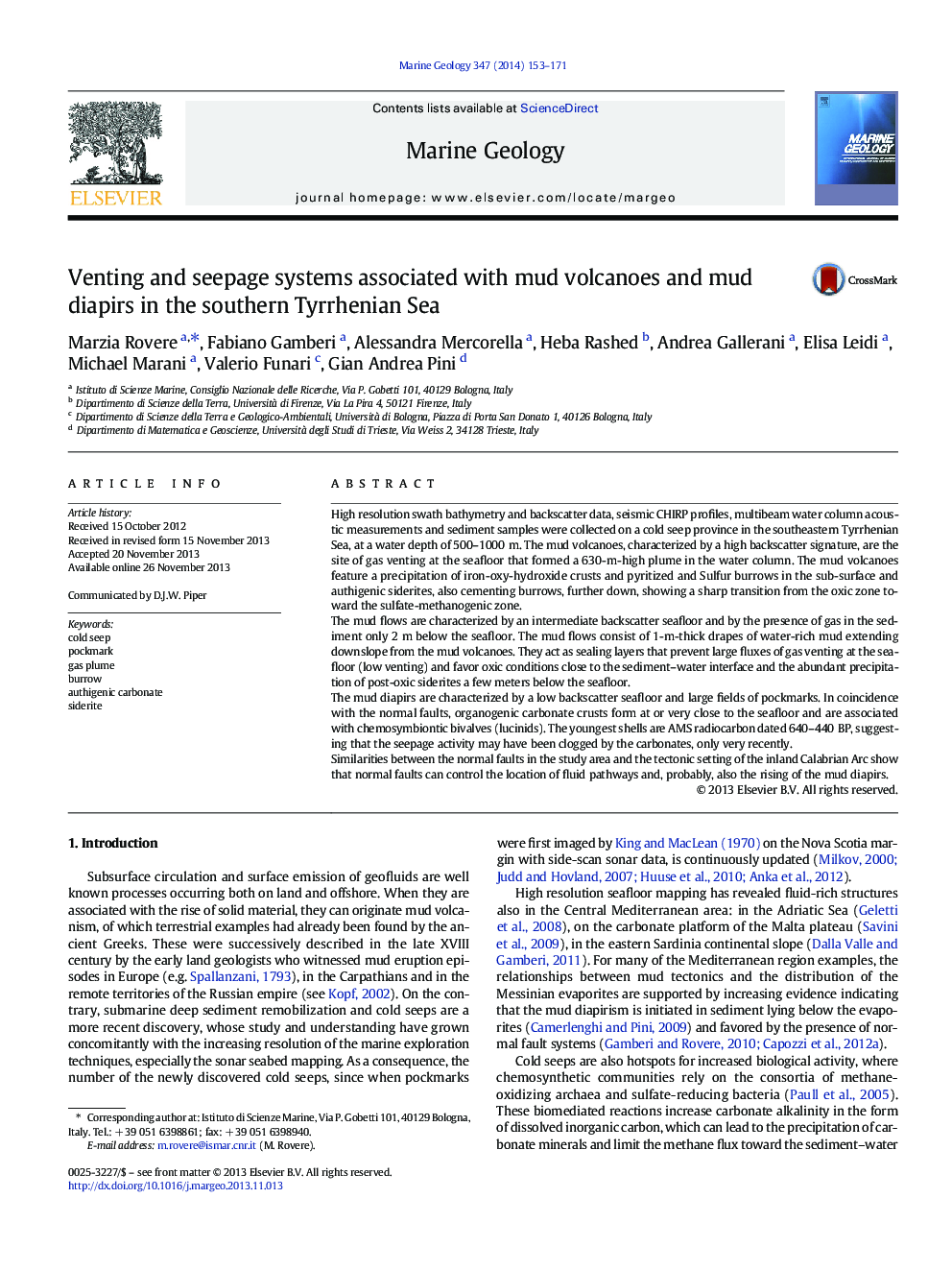| کد مقاله | کد نشریه | سال انتشار | مقاله انگلیسی | نسخه تمام متن |
|---|---|---|---|---|
| 4718356 | 1639105 | 2014 | 19 صفحه PDF | دانلود رایگان |
• Fast venting is associated to mud volcano structures in the SE Tyrrhenian Sea.
• A 630-m-high gas plume was detected in the fast venting sites.
• Low venting was observed in the mud flows from the mud volcano flanks.
• Carbonates clogged seepage activity in the pockmark-abundant mud diapirs.
• Normal faults control the location of fluid pathways and chemosymbiontic fauna distribution.
High resolution swath bathymetry and backscatter data, seismic CHIRP profiles, multibeam water column acoustic measurements and sediment samples were collected on a cold seep province in the southeastern Tyrrhenian Sea, at a water depth of 500–1000 m. The mud volcanoes, characterized by a high backscatter signature, are the site of gas venting at the seafloor that formed a 630-m-high plume in the water column. The mud volcanoes feature a precipitation of iron-oxy-hydroxide crusts and pyritized and Sulfur burrows in the sub-surface and authigenic siderites, also cementing burrows, further down, showing a sharp transition from the oxic zone toward the sulfate-methanogenic zone.The mud flows are characterized by an intermediate backscatter seafloor and by the presence of gas in the sediment only 2 m below the seafloor. The mud flows consist of 1-m-thick drapes of water-rich mud extending downslope from the mud volcanoes. They act as sealing layers that prevent large fluxes of gas venting at the seafloor (low venting) and favor oxic conditions close to the sediment–water interface and the abundant precipitation of post-oxic siderites a few meters below the seafloor.The mud diapirs are characterized by a low backscatter seafloor and large fields of pockmarks. In coincidence with the normal faults, organogenic carbonate crusts form at or very close to the seafloor and are associated with chemosymbiontic bivalves (lucinids). The youngest shells are AMS radiocarbon dated 640–440 BP, suggesting that the seepage activity may have been clogged by the carbonates, only very recently.Similarities between the normal faults in the study area and the tectonic setting of the inland Calabrian Arc show that normal faults can control the location of fluid pathways and, probably, also the rising of the mud diapirs.
Journal: Marine Geology - Volume 347, 1 January 2014, Pages 153–171
